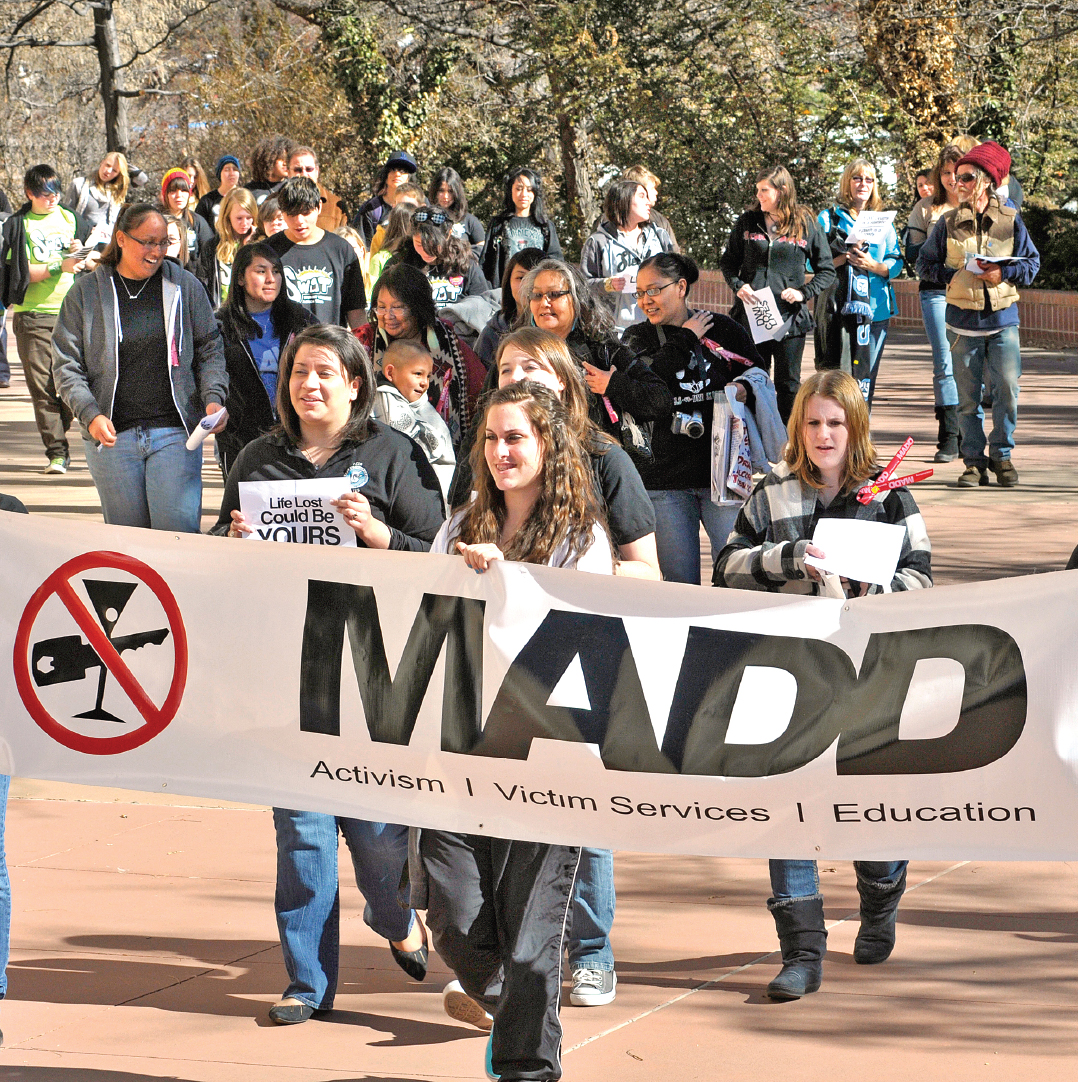Chapter 17: Persuasive Speeches
It’s the thing that no parent ever wants to experience, but it happens; it happened to Jan Withers. In a 2012 speech to traffic safety professionals in Orlando, Florida, she explained what happened on the worst day of her life:
It started with my husband receiving a phone call that Alisa had been in an accident—that is what he called it at that time. Of course, as it turns out, it wasn’t an accident at all. The truth is, someone made a choice—a tragic choice—to drive drunk.
Nobody thinks that it can happen to them. Even in that moment, as my husband told me that we needed to go to the hospital immediately, it never crossed my mind that she would die. Never. But she did.1
Alisa was 15 years old.
Not wanting others to face the same tragedy, Jan turned her loss into action by joining Mothers Against Drunk Driving (MADD), eventually becoming its national president. A grassroots organization, MADD advocates for families and victims who have suffered injury or loss at the hands of a driver impaired by alcohol or drugs. Through persuasive communication—speeches to parents and school assemblies, meetings with lawmakers, and social media campaigns—MADD volunteers speak out for tougher laws aimed at reducing impaired driving. Since its founding in 1980, more than 1,000 such laws have been passed at the state and federal levels, including legislation raising the minimum drinking age and establishing sobriety checkpoints (El-Guebaly, 2005).
One reason MADD volunteers are so persuasive is that they translate abstract statistics into personal stories their listeners can relate to. In her 2012 speech, Jan Withers pointed out how this approach contributes to MADD’s success:
In the nearly 20 years since [Alisa’s] death, MADD has changed the national culture on drunk driving specifically and traffic safety generally. We put a face and a name with the numbers. We got legislators, government agencies, and the media to understand that it was possible to do something about the human element of the traffic safety problem. Most of all, we helped Americans realize that drunk driving isn’t something that we have to live with.
Guided by a vision of a future free of drunk driving, MADD volunteers make presentations and create other types of communication messages to raise awareness about the human toll of drunk driving. So whether it’s through a persuasive speech, a blog post, or a tweet, MADD emphasizes a clear and simple message: don’t drink and drive. Without question, the organization’s persuasive communication tactics work. MADD has helped change attitudes, behaviors, and laws about driving while impaired.

CHAPTER OUTLINE
What Is Persuasive Speaking?
Organizing and Supporting Persuasive Speeches
Appealing to Your Audience’s Needs and Emotions
Guidelines for Persuasive Speaking
Sample Speech Resources
Think about your everyday communication and how often you try to influence others’ attitudes, behaviors, and actions. For instance, on your way to work, you call up a friend and try to persuade her to see the movie you want to see. At your job, you convince a coworker to cover your shift. Persuasive communications like these happen in a wide range of settings. In this chapter, however, we focus on persuasive speeches—those that reinforce or change listeners’ attitudes and beliefs and possibly even motivate them to take action.
Persuasive speaking is notably different from coercion. Coercion involves using threats, manipulation, and even violence to force others to do something against their will. Any use of coercion is unethical. Instead, when you speak to persuade others, you provide your audience with accurate and honest information, giving them the freedom to choose whether to accept your message or not. In this chapter, you’ll learn:
- The different types of persuasive speeches
- The importance of credibility in persuasive speaking
- How to organize a persuasive speech and support your claims
- Strategies for appealing to your audience’s needs and emotions
- General guidelines for persuasive speaking